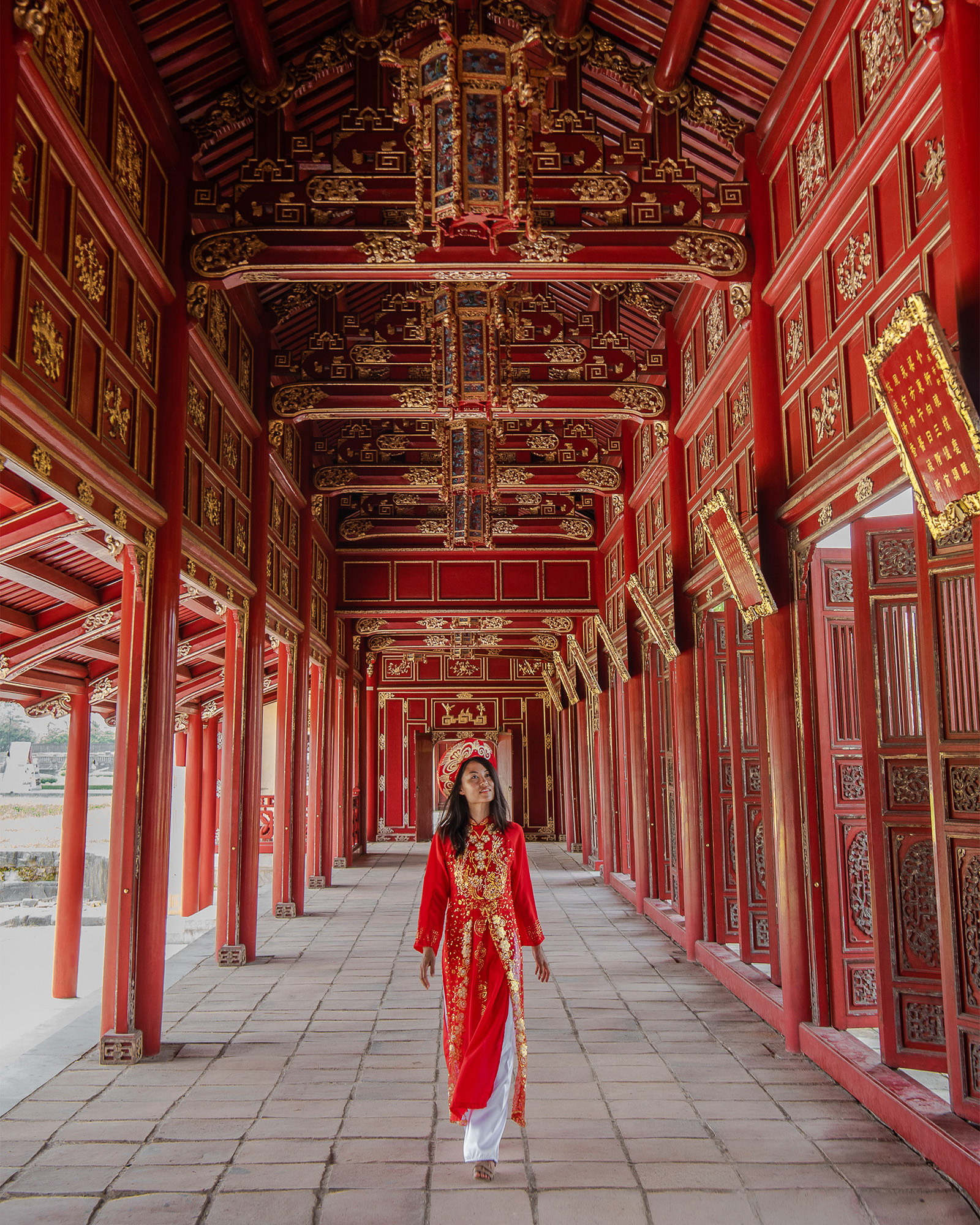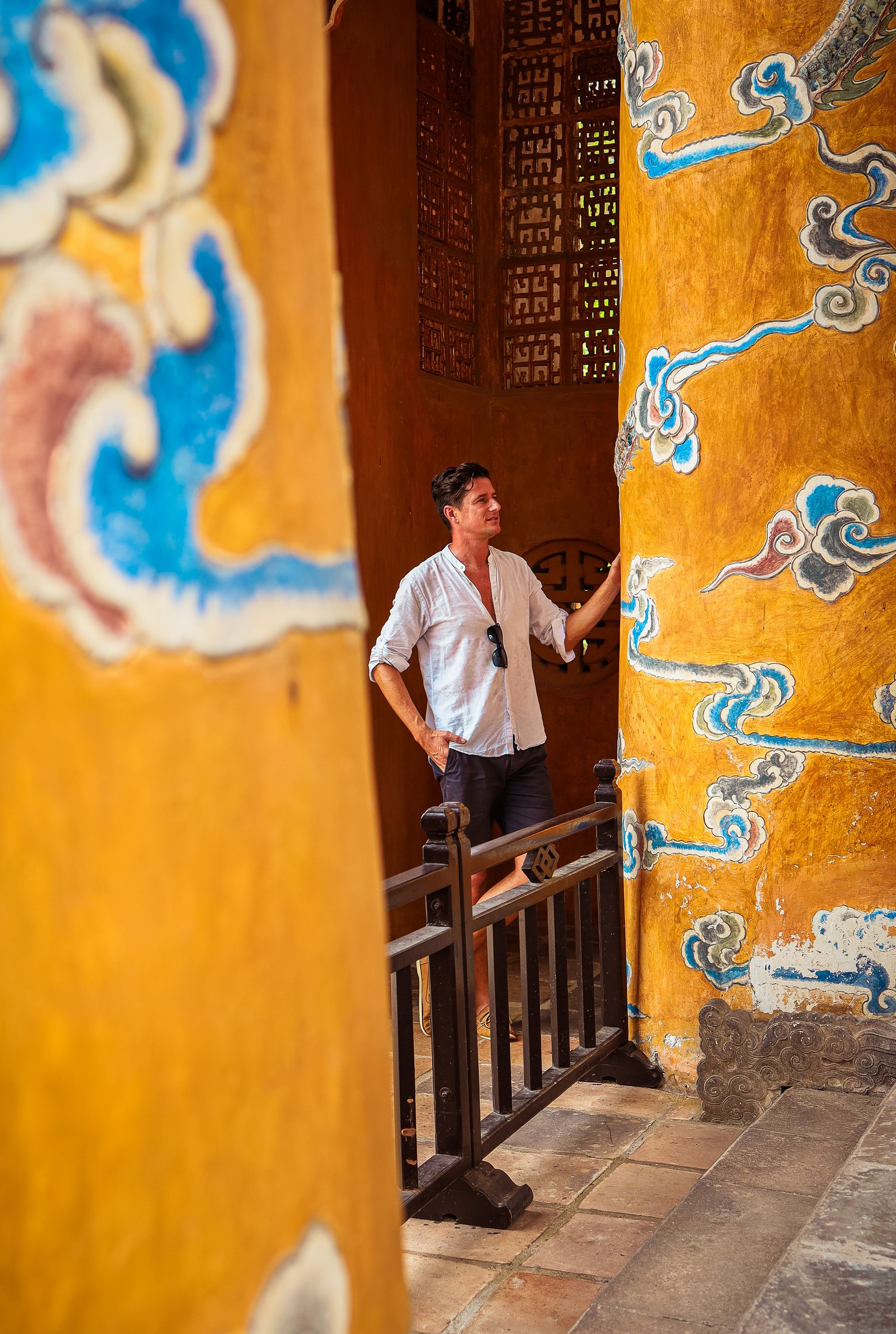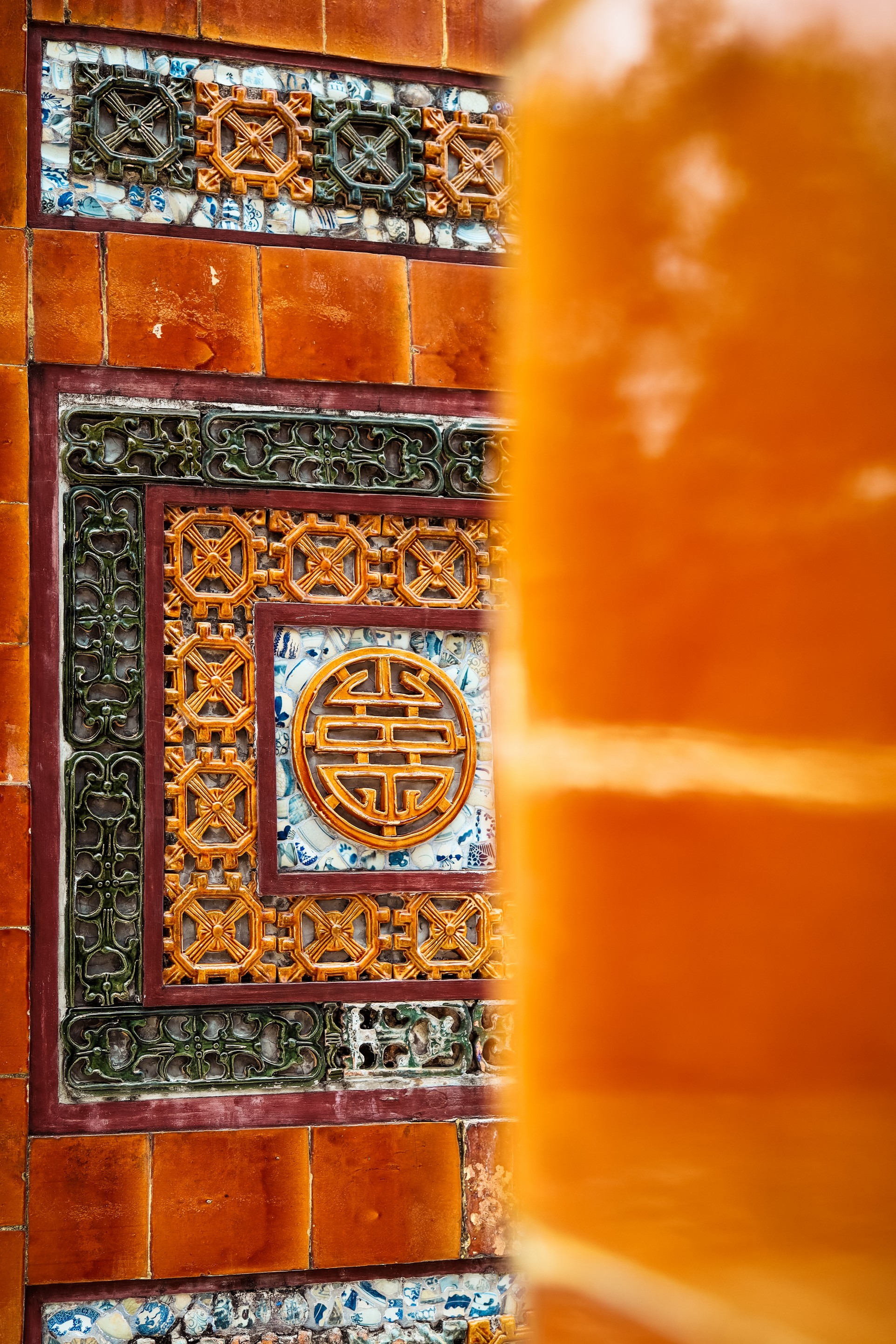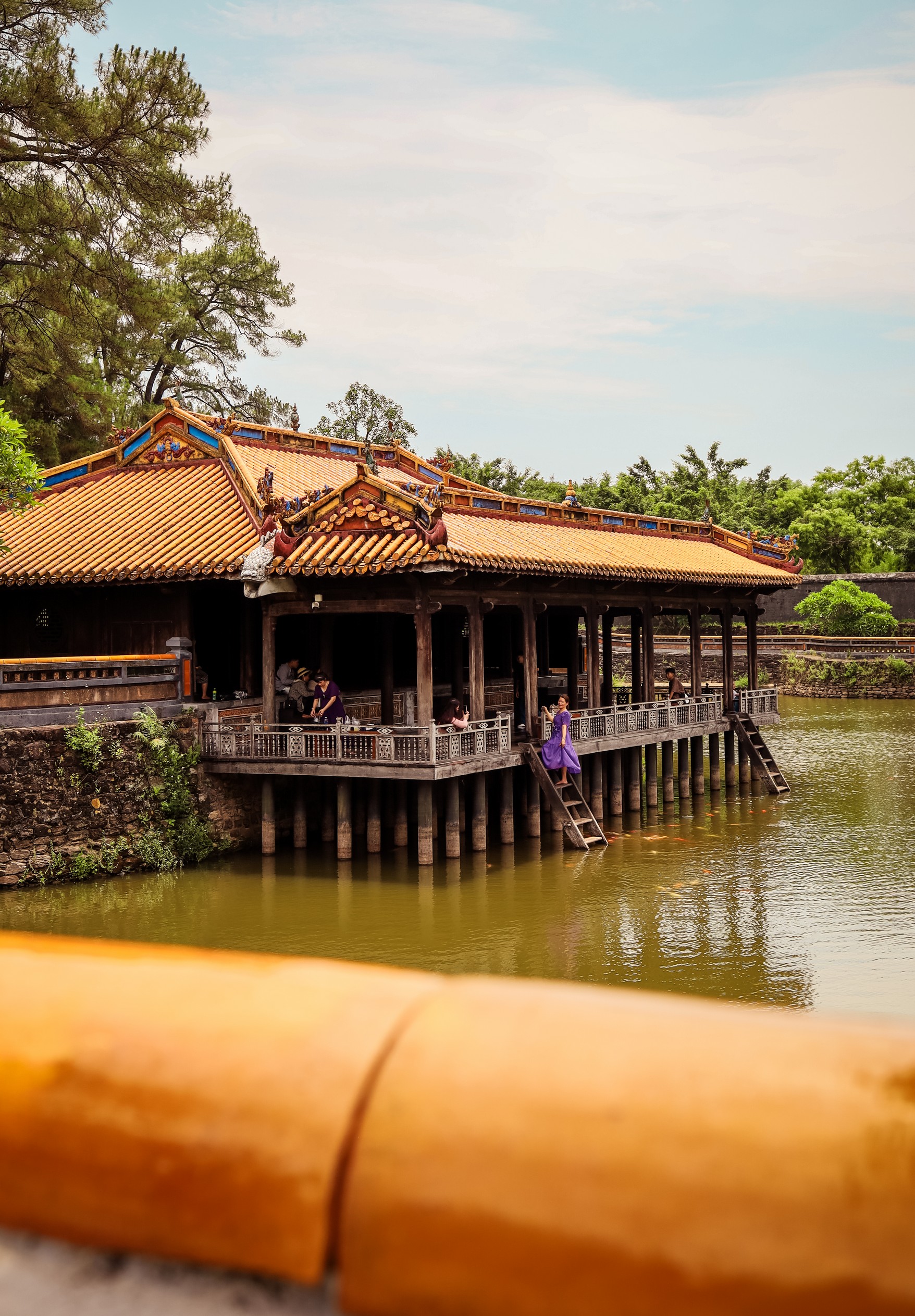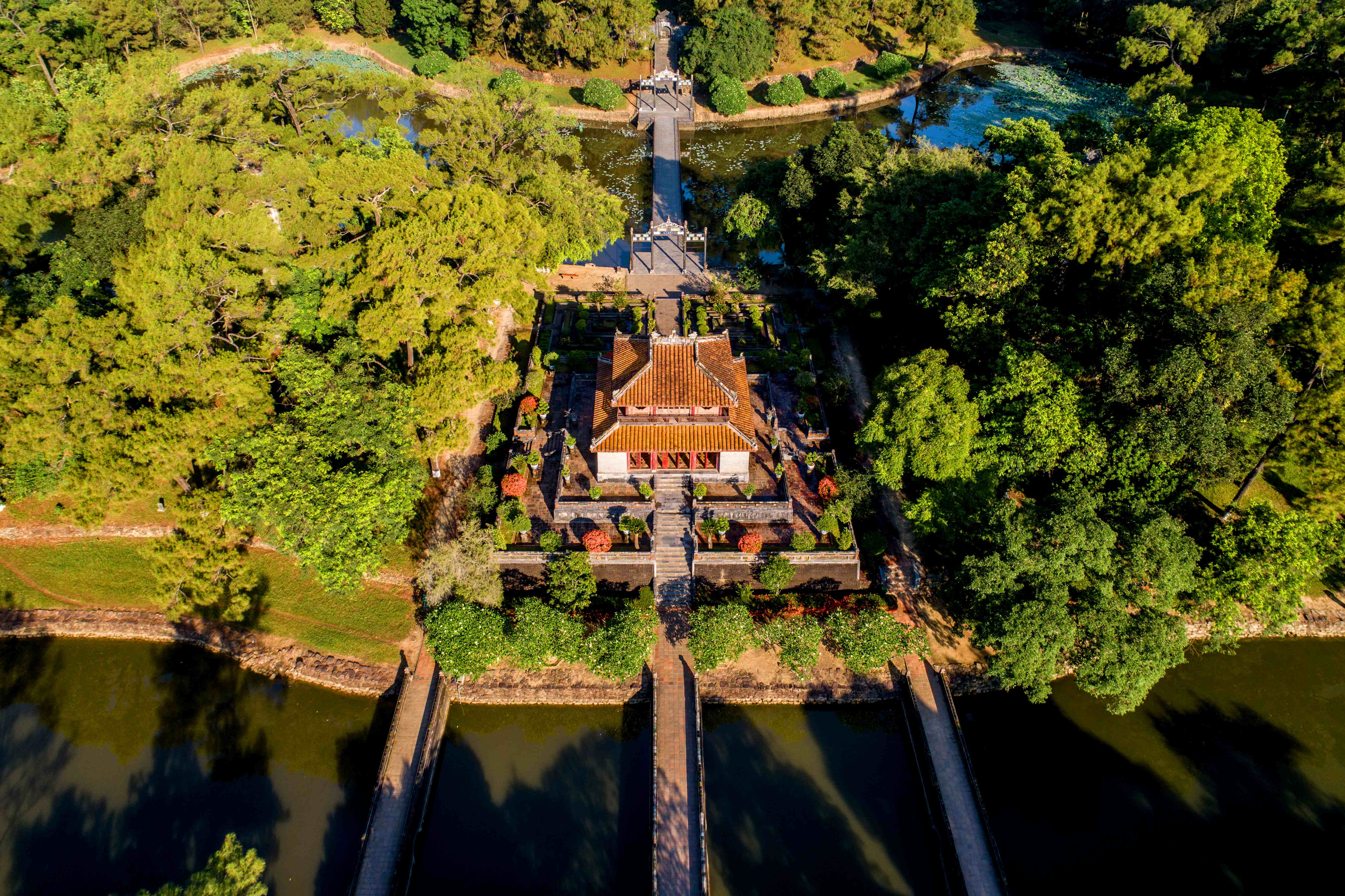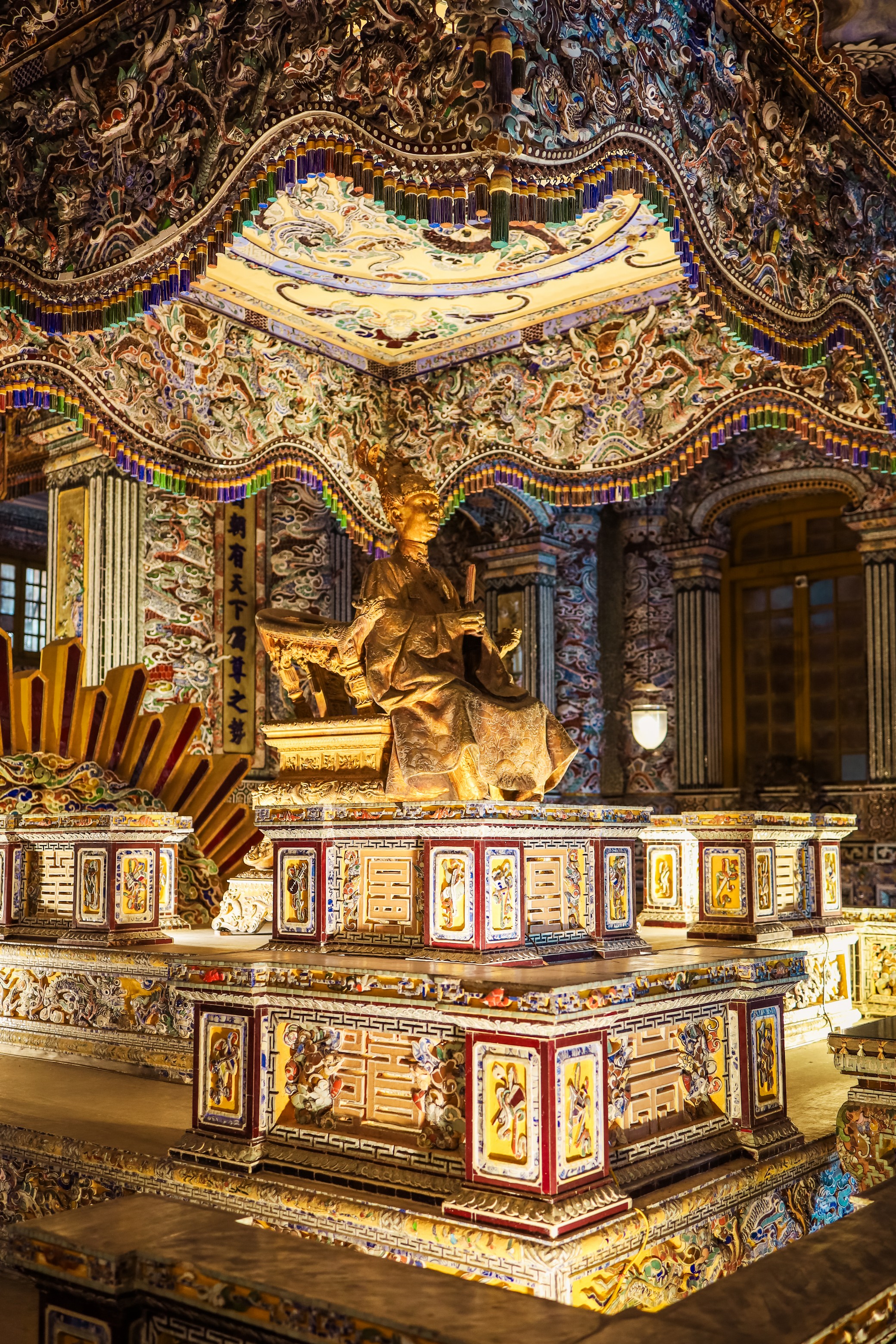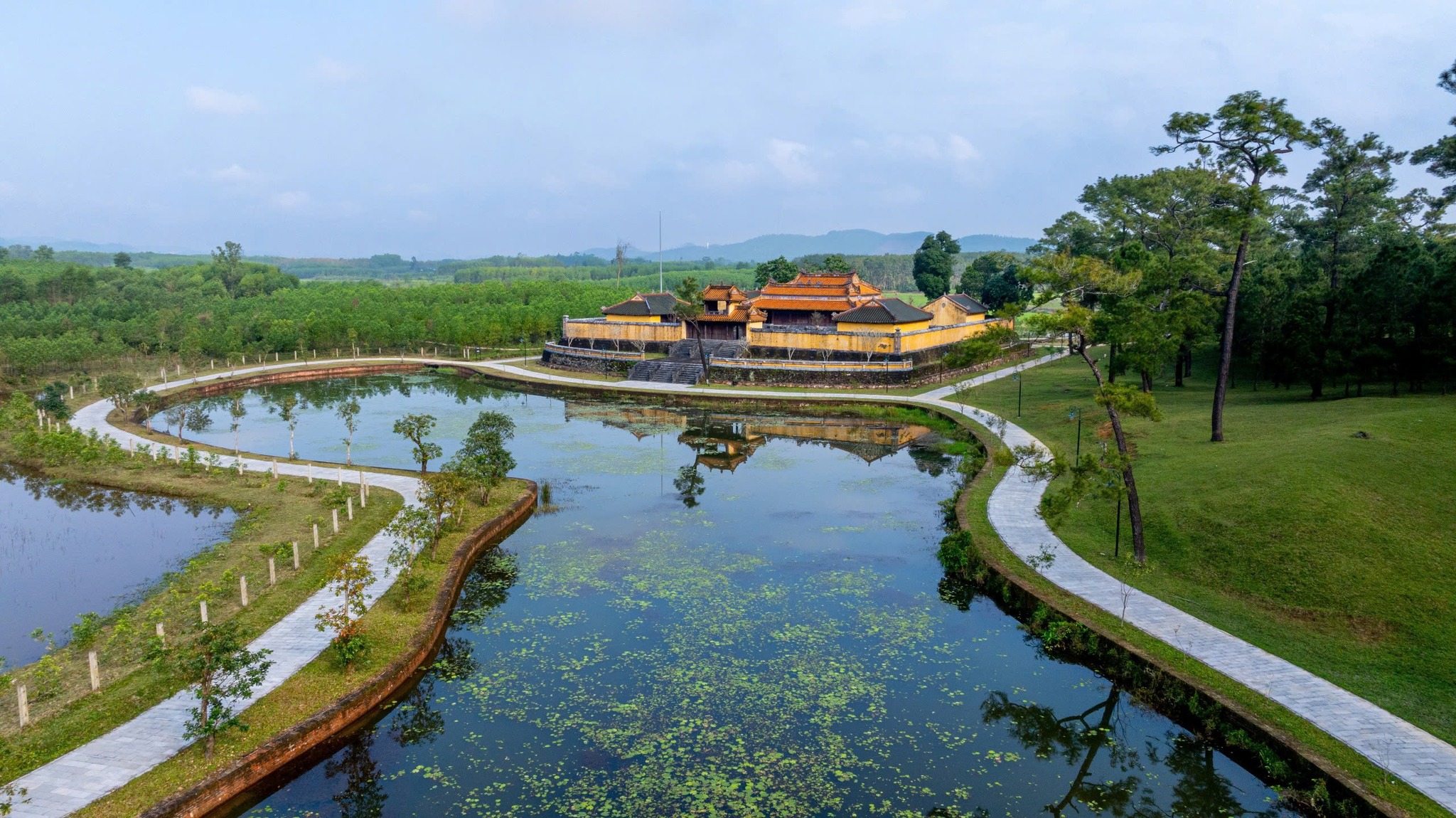Legacy of the Nguyen Dynasty
A Journey Through Hue’s Imperial Tombs
Situated along the banks of the Perfume River, Hue’s imperial tombs reflect the grandeur of the Nguyen Dynasty. Ornate gates, intricately carved statues and moss-covered temples make these historical sites a must-visit for travellers seeking enriching cultural experiences.
Nestled between the azure waters of the East Sea and the Truong Son mountain range, Banyan Tree Lăng Cô is the perfect base from which to explore the tombs of the ancient emperors of Hue. Soak up culture and forge memories that will last a lifetime in the heart of Central Vietnam.
The Nguyen Dynasty’s Legacy
The Nguyen Dynasty (1802–1945) was the last imperial dynasty of Vietnam. Ruling from the historic city of Hue, the Nguyen emperors established traditions that remain deeply embedded in Vietnamese identity today.
Confucian principles guided governance under their reign, while a flourishing artistic scene gave rise to exquisite lacquerware, calligraphy and court music. The dynasty also played an important role in preserving the country’s architectural heritage by commissioning grand palaces, pagodas and citadels.
Perhaps their most enduring legacy is the construction of Hue’s royal tombs. Set near the Complex of Hue Monuments, a UNESCO World Heritage Site located in and around Hue in Thua Thien Hue province, these final resting places feature elaborate pavilions, lotus-filled lakes and imposing stone warriors.
Today, Hue’s imperial tombs offer discerning travellers a unique opportunity to discover Vietnam’s rich heritage, marvel at traditional architecture and immerse themselves in the captivating historical narratives of these iconic sites.
Architectural Principles of Hue’s Royal Tombs
The imperial tombs of Hue are a testament to the Nguyen Dynasty’s rich artistic legacy. Guided by key architectural principles, each tomb showcases elements that create spaces of harmony, reverence and enduring cultural significance.
Top Imperial Tombs to Visit
The Nguyen Dynasty had 13 emperors, but only seven royal tombs were built. Surrounded by natural landscapes, each historical site tells a unique story.
Thieu Tri’s Hidden Gem
Completed in 1848, Thieu Tri’s tomb stands apart for its open design. It lacks the fortress-like walls seen in the other imperial tombs, instead embracing the surrounding landscape. Despite being a less popular attraction, the site’s peaceful ambience, lotus ponds and traditional structures offer an intimate glimpse into Nguyen-era aesthetics.
- Location: 8 km from Hue city centre
- Opening Hours: Daily from 7AM to 5PM
- Entrance Fee: Included in the Hue Monuments Complex ticket
- Recommendations: Best for visitors looking to explore a quieter, less crowded historical site
Tips for Visiting Hue’s Royal Tombs
Visiting the Nguyen imperial tombs in Hue is a journey through history, artistry and cultural legacy. To ensure a seamless and enriching experience, consider these thoughtful tips:
- Respect sacred spaces - Hue’s royal tombs sites of cultural and spiritual reverence. Dress modestly by covering your shoulders and knees, especially when entering temple areas. Keep noise to a minimum and avoid touching sacred structures or statues.
- Plan for an early visit - Arriving in the early morning allows you to experience the tombs in a peaceful setting before the crowds arrive. The cooler temperatures also make it more comfortable to explore the vast complexes on foot.
- Prepare to walk - The tombs require plenty of walking across stone pathways and uneven terrain. Wear comfortable shoes, bring water and dress in light, breathable clothing suited for Vietnam’s climate.
- Observe temple etiquette - When visiting prayer halls and ancestral shrines, refrain from loud conversations and flash photography. Some areas may have restrictions on photography. Always check for posted guidelines.
- Book a guided tour - For a deeper understanding of each tomb’s history, architecture and symbolism, consider joining curated imperial tomb tours. Expert guides provide insight into the Nguyen emperors’ legacies and the feng shui principles shaping their final resting places.
- Capture the atmosphere - Hue’s imperial tombs offer stunning backdrops for photography. Visit during golden hour (early morning or late afternoon) for soft lighting that enhances the details of these architectural wonders. Framing shots with archways or pavilions can add depth, while wide-angle shots showcase the grandeur of the landscapes. Be mindful of visitors and avoid obstructing pathways when taking photos.
- Arrange transportation in advance - The most convenient way to visit multiple tombs in one day is by hiring a private car. Banyan Tree Lăng Cô also offers a complimentary shuttle bus to Da Nang, a convenient starting point for exploring Hue attractions.
Discover Hue’s Imperial Heritage With Banyan Tree Lăng Cô
After a day of exploring the Nguyen imperial tombs in Hue, return to our luxury resort in Lăng Cô.
Ideally located near three popular destinations—Hue, Da Nang and Hoi An—Banyan Tree Lăng Cô offers a sanctuary for the senses. Unwind in a private pool villa overlooking the imperial coast, with design elements inspired by traditional Vietnamese architecture.
Savour imperial-inspired dining experiences at our signature restaurants, awaken your senses with immersive resort activities and imperial spa rituals or enjoy a round of golf at Laguna Lăng Cô.
Book your next holiday at Banyan Tree Lăng Cô and fully experience the historical beauty of Central Vietnam.
.jpg)

